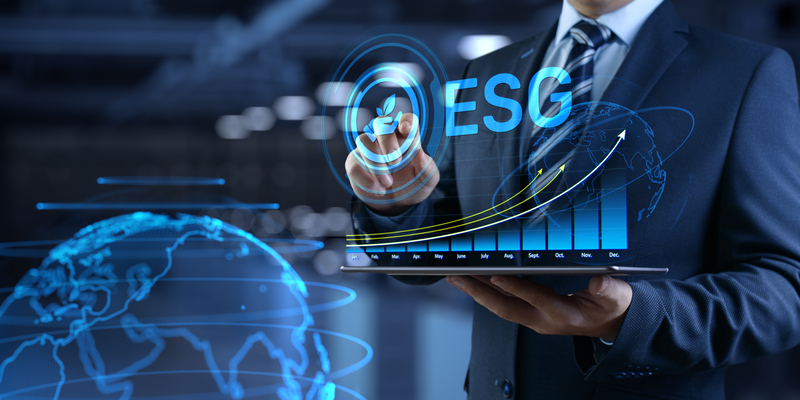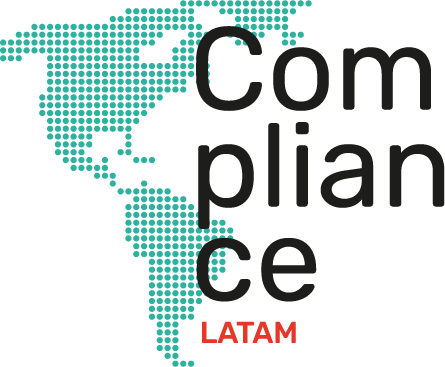
03-04-2023 | Noticias-en
The Ministry of Environment and Sustainable Development (“ MADS ”) published the draft of its Regulatory Agenda for the year 2023, for general public consultation. This sectoral planning document contains the general regulation projects that the MADS, as the entity that governs the public policy of the environmental sector, plans to develop.
This initial draft has a total of seventeen (17) regulatory projects, the development of which was assigned to different MADS dependencies, as shown below:
| Dependence |
Scope of the regulation project
(according to the draft of the published regulatory agenda) |
Semester or month of 2023 in which it will be submitted to public consultation |
| Climate Change and Risk Management Department |
” By which Decree 926 of 2017 and 446 of 2020 is modified ” (referring to the regulation of the procedure for the non-causation of the carbon tax) |
First semester |
| ” Regulation of the National Council on Climate Change (CNCC) and Strengthening of SISCLIMA “ |
First semester |
| ” By which is regulated what is related to the National Program of Tradable Quotas for the Emission of Greenhouse Gases (PNCTE) “ |
First semester |
| ” By which article 10 of Law 388 of 1997 is regulated with the purpose of including climate change management among the determinants of territorial planning plans “ |
Second semester |
| ” By which international transfers of mitigation results carried out in Colombia are regulated “ |
Second semester |
| “ Establishment of Carbon Budgets ” |
Second semester |
| Directorate of Environmental Planning of the Territory – SINA |
“By means of which part 3 is added to Book 1 of Decree 1076 of 2015, Sole Regulation of the Environment and Sustainable Development Sector, in relation to the coordination and articulation of the environmental entities of the National Environmental System and other provisions are adopted” |
Second semester
|
| Subdirectorate of Education and Participation |
“By means of which the activities and procedures that entail the sanction of community work in environmental matters are regulated, and the preventive measure of attendance at mandatory environmental education courses as part of the reprimand” |
February 2023 |
| “ Decree by means of which the National Indigenous Environmental Commission – CNAI is created ” |
To define
(“ Public consultation was held in February 2021, pending work route with the legal secretary of the presidency ”) |
| Directorate of Environmental, Sectoral and Urban Affairs
|
” By which Chapter 3 of Title 1 of Part 2 of Book 2 of Decree 1076 of 2015 is modified in relation to environmental licensing “ |
First semester |
| ” By which Title 6 of the Sole Regulatory Decree 1076 of 2015, of the Environment and Sustainable Development sector is modified and added in relation to the integral management of hazardous waste “ |
First semester |
| “By which the control of cross-border movements of non-hazardous waste destined for recovery activities is regulated and other provisions are adopted ”
OECD Recommendation [C(2001) 107 /FINAL] currently referenced as OECD Decision/LEGAL/0266; (Law 1950 of 2019)”
|
First semester
|
| “By which the mechanisms are established for the gradual implementation of the Basic Performance Standards – EBD in the storage, use or transfer facilities of solid waste, which are not subject to environmental licensing.
Council Recommendation on Ecological Waste Management [C(2004) 100] – Law 1950 of 2019″”
|
First semester |
| Directorate of Forests, Biodiversity and Ecosystem Services |
“By which the collection and use of biological resources are regulated for bioprospecting, commercial and industrial purposes” |
First semester |
| “Structuring of the proposal to update Decree 1076 of 2015, in relation to the topics in column H. “(” Permits for collecting specimens of wild species of biological diversity for purposes of non-commercial scientific research and biological collections in the country ”). |
First semester |
| ” Regulation of Law 2206 of 2022 “By means of which the productive use of guadua and bamboo is encouraged ” Regulatory Decree Art. 4 and 6. ” |
First semester |
| Designation of an area of Lake Tota as a Ramsar wetland of international importance. (regulates Law 357 of 1997). Within the framework of the management and work that has been carried out in Lake Tota, for more than two years, in which progress has been made in the generation of cartographic and thematic information, with which the polygon proposal was built and the FIR file (Ramsar Information Sheet), additionally, there are already different spaces for socialization and work with the different actors in the region. ” |
First semester |
In the draft regulatory agenda, for each of the projects mentioned above, in addition to a general overview of the topic subject to regulation, reference is made to: (i) who are the MADS officials in charge of their development; (ii) the entities that will participate in its design and those with competence for its issuance; (iii) the rules that would be modified with its issuance and the type of legal instrument that would be used for it.
For more information, contact:

Oscar Tutasaura | Partner Posse Herrera Ruiz | oscar.tutasaura@phrlegal.com

03-04-2023 | Noticias-en
The Teleworking contract and the Guidelines for the Right to Disconnect from Work are governed by a series of guidelines (Ministerial Agreement MDT-2022-237 – December 23, 2022).
– What is its objective and for whom is it applicable?
Its objective is to regulate teleworking and work disconnection, this is mandatory for all employers that apply teleworking among their workers.
– Is there a difference between face-to-face and teleworking?
The difference is the place where the worker will carry out his work activities. This can be the worker’s home or any specific place.
The functions, rights, schedules and activities of the worker will remain the same.
– What is its validity and how should it be executed?
The validity of teleworking must be defined between the parties after they agree that the activities to be carried out are carried out in this modality.
Teleworking must be carried out by the worker in the specifications of his position, with the employer being responsible for providing the necessary materials and equipment for it to be carried out correctly, taking into account that the values for telephone and internet are considered “tools of work”, therefore, they will not form part of the remuneration for settlement purposes, but they must be borne by the employer.
Additionally, the employer must ensure that they adopt the respective health and safety measures within the space where teleworking will take place (inputs, conducts and conditions). In the event that the place where the teleworking will be carried out is solely the will of the worker, he must declare that he will adopt all the corresponding security measures.
– What is the registration process?
The original teleworking contract must be registered in the Ministry of Labor system within a period of no more than 30 days.
In the event that this modality is applied to a current contract, the employer must register, within a period of 15 days, the period of time in which the work activities will be carried out in the teleworking modality.
– What is the right of disconnection?
It is the right that workers have that, once their working day is over, they cannot establish communications, issue orders or requirements for at least 12 continuous hours in a 24-hour period.
The following will be excepted from this rule: (i) the circumstances established in art. 52 of the Labor Code, and; (ii) people who fulfill management roles or positions of trust.
– The disconnection policy
To comply with the right to disconnection of workers, employers must have a Disconnection Policy which must contain:
1. Training measures for working hours, teleworking and the right to disconnect;
2. Establish the guidelines of the supervisors or immediate bosses for the requirements outside of working hours;
3. Guidelines to follow so that the use of technology does not affect the enjoyment of work rest, and;
4. Internal procedure for receiving complaints for non-compliance with the Labor Disconnection Policy.
This policy must be implemented within a period of 90 days from the issuance of the Ministerial Agreement.
For more information contact:

Daniel Castelo | Senior Associate Bustamante Fabara | dcastelo@bustamantefabara.com

Maria Rosa Fabara | Partner Bustamante Fabara | mrfabara@bustamantefabara.com

03-04-2023 | Noticias-en, Sin categoría
The Financial System Supervisory Authority (“ASFI”), through ASFI Circular No. 749/2022 of December 30, 2022, approved and published in the Electronic Gazette of Financial Regulation (GERF), the Modifications to the Regulation of the Registry of the Stock Market and Related Regulations (“Circular 749/2022”), regarding the guidelines for the issuance of Green Bonds, Social Bonds and Sustainable Bonds, issued by the International Capital Markets Association (ICMA) , which are recommended to promote integrity in the development of the Bond market, transparency and disclosure of information.
Based on the Principles of Green and Social Bonds, as well as the ICMA Sustainable Bonds Guide, Circular 749/2022, establishes and incorporates the definitions and concepts of “Social Bonds”, “Sustainable Bonds”, “Green Bonds” , “Social Projects”, “Sustainable Projects”, and “Green Projects”, among others:
Social Bonds: They are fixed-income securities that represent a long-term debt obligation contracted by an issuing entity, whose resources will be exclusively used to finance or refinance new or existing projects that are eligible as Social Projects;
Sustainable Bonds: They are fixed-income securities that represent a long-term debt obligation contracted by an issuing entity, where the resources will be exclusively used to finance or refinance a combination of Green Projects and Social Projects;
Green Bonds: They are fixed-income securities that represent a long-term debt obligation contracted by an issuing entity, whose resources will be exclusively used to finance or refinance new or existing projects that are eligible as Green Projects;
Social Projects: projects whose objective is to address or mitigate a specific social problem and/or try to achieve positive social results especially, but not exclusively, for a target population;
Sustainable Projects: Those projects that seek to generate a positive impact on the well-being of a certain social group;
Green Projects: Those projects that seek specific environmental benefits subject to evaluation and quantification;
In line with the current trend in international capital markets and in various jurisdictions, where debt instruments are issued for specific purposes, the purpose of the amendments included in Circular 749/2022 is to make registration, authorization, and trading viable. of Green Bonds, Sustainable Bonds and Social Bonds in the Bolivian Stock Market. As part of this objective, Circular 749/2022 modifies the Securities Market Registry Regulations, the Issuance Prospects Manual, the Regulations for Carrying Out External Audit Work and the Regulations for Carrying Out External Review Work, with the purpose of generating security and confidence to local and foreign investors, under the supervision and control of ASFI.
Among the principles for the issuance of Green Bonds, Sustainable Bonds and Social Bonds, it is possible to highlight the obligation to indicate the destination of the funds, forcing them to be used in projects that generate clear and specific environmental and/or social benefits, and must be described in detail and quantified by the issuer, according to the following:
- The categories of eligible green, social and/or sustainable projects to which the funds will be allocated;
- The refinancing of specific projects to which the resources have been assigned;
- The environmental and/or social benefits and impacts of the projects.
The issuance of Green, Social and/or Sustainable Bonds must be exclusively used to finance the following types of projects:
- Renewable energy;
- Energy efficiency;
- Pollution prevention and control;
- Sustainable management of natural resources and land use;
- Biodiversity Conservation;
- clean transportation
- Sustainable management of water and wastewater;
- Adaptation to climate change;
- Products adapted to the ecological and circular economy;
- Technologies and production processes.
Likewise, the following social activities will be considered:
- Basic services infrastructure;
- Access to basic services;
- affordable housing;
- Employment generation;
- Food safety;
- Socioeconomic advances and empowerment.
All the funds from the issuance of Green Bonds, Social Bonds and/or Sustainable Bonds must be used exclusively to finance or refinance new or existing green projects or social projects and the financing may be partial or total with respect to the resource requirement of each project.
For more information contact:

Carla Arellano | Counselor Ferrere | carellano@ferrere.com

03-04-2023 | Noticias-en
The promotion, protection and respect of human rights have traditionally been associated and attributed almost exclusively to a responsibility of the State. This paradigm today is in a clear process of transition towards a scenario in which the company appears as an agent that is responsible for assuming a leading role in the respect of these rights.
In a modern and globalized world, companies generate a great impact on people’s lives and also on local communities. Although the effects of this situation can be beneficial, thanks to the creation of jobs or the incentive they can generate for local investment, they can also bring harmful consequences in cases where violations of human rights are found, such as : forced labor , child labor, breaches of labor regulations, unequal treatment and discrimination, non-payment of an adequate salary, lack of freedom of association , among others.
In this context, and given that it is increasingly necessary to incorporate human rights policies in companies, we recommend carrying out the following practices, depending on the scenario in which they are located:
The company has not implemented human rights policies or due diligence
In this case, the company should begin by evaluating its potential and actual impacts on human rights, its existing activities and processes, supply chains, and relationships with third parties, in order to provide itself with adequate and effective controls, in conjunction with an action plan in this area. .
The company has adopted human rights due diligence policies and processes
In this case, the company must:
- Constantly monitor and review its risks in this area.
- Continuously verify the suitability of the channels or mechanisms that allow the relationship, communication and participation of stakeholders.
- Make the pertinent adjustments to achieve evolution in the prevention and repair mechanisms that the organization has.
Thus, our suggestion for all companies, however small, medium or large they may be, is to proactively manage adverse effects -potential or real- in terms of human rights, since if they do not incorporate policies, procedures today and strategies both in respect and in response to the impact on these rights, obviously will not be sustainable over time.
For more information on these topics you can contact:

Francesca Franzani | Compliance Group Director | ffranzani@az.cl

Florence Fuentealba | Associate | ffuentealba@az.cl
Cesar Robledo | Associate | crobledo@az.cl

03-04-2023 | Noticias-en
Having an ESG strategy is a way for companies to assess how their business decisions affect the environment and society. Why is it important to generate sustainable businesses? Experts from prestigious firms in the region provide their opinion.
Social need and business opportunity come together to transform the way companies mitigate their impacts, drive performance, and report their results.
The ESG criteria -environmental, social and corporate governance, for its acronym in English- are a non-financial reporting mechanism whose objective is the implementation by companies and institutions of concrete actions that contribute to generating positive social impact in the community. , the environment and its internal government.
An ESG strategy that allows global challenges such as climate change, diversity and inclusion of different groups, sustainable financial management, among others, to be incorporated into the business and, by including them, enables companies to respond to current demands and future of society generating shared value and increasing its competitiveness.
Specialists from prestigious legal firms in the region provide their point of view on the importance of incorporating ESG strategies into business.
According to Florencia Fuentealba, Associate of the Compliance Group at az in Chile , “a company that has adopted ESG measures may have a better reputation than a company that has not done so, as it denotes that there is a concern to mitigate its negative impacts and even more , generate positive impact. Companies with ESG can be more competitive than one that does not, as ESG can increase business sustainability in a period of climate crisis, crisis of confidence, etc, allowing companies to obtain their social license to operate”.
However, the incorporation of ESG strategies has evolved and been refined over time. “Until a few years ago, having an ESG strategy was something voluntary for companies,” says Dorothea Garff, Senior Associate at the firm Beccar Varela of Argentina . “We understand that ESG strategies will become mandatory, because in many countries laws with extra-jurisdictional effects are beginning to be implemented that require compliance with certain standards.”
For Gerson Vaca Abendaño, Partner of Basham, Ringe y Correa de México “if we talk about value, we consider that there are different factors on which it is important to work, prepare and have ESG criteria in a company, which undoubtedly increases the value of this one compared to other companies in similar conditions”. And he describes as values: Understanding and mitigation of ESG and Competitiveness risks.
Impact on stakeholders: relationship with consumers
In recent years we have been able to observe a change in consumer behavior from a more passive role to a more empowered one, whereby they more frequently demand information regarding the products they consume, opting for those that, for example, respect fair trade, responsible value chains, care for the environment and not testing on animals.
“ESG strategies are fundamental in today’s society, without a doubt, they bring strategic and economic value to companies in all industries. A global awareness of the importance of this issue has been created, which arose as a need for a common problem and the issue gained strength with the United Nations resolution regarding the goals set by the countries in the 2030 Agenda,” he explains. Vivian Liberman, partner of the BLP firm in Central America .
Graff thinks along the same lines with his vision of Argentina. “Today consumers of any type of company ask for more explanations about the origin of the product and how it is made. We are increasingly aware of the environmental and social impact that an article can have. The brands that are positioned from the start with this strategy have a great future. But there are also sectors with more risks in environmental and human rights issues that should be dealt with more urgently”.
Investments and capital raising
In the case of investors, their priorities have changed in recent years. The best example of this is the investment fund Blackrock, which has already adopted a sustainability criterion for its investments. Thus, investors currently seek to finance companies that consider social, environmental and governance initiatives in their purpose and objectives, since these appear to be less risky than those in which there is no perspective in this regard.
Investment portfolios based on ESG criteria have proven to have less volatility, generate higher returns and guarantee long-term investment returns, generating sustained and lasting growth. On the other hand, companies that ignore these criteria could present conflicts with the communities, fraud, acts of corruption, financial irregularities and labor conflicts that seriously damage the corporate image and the operation of the business.
For Fuentealba, “when adopting an ESG strategy, it is not enough to make statements only, but as is done with financial factors, companies must incorporate objectives, goals and metrics to evaluate their progress. In my opinion, a good ESG strategy is one that can be measured and audited, as only then can we know if the desired impact is being generated or if the strategy and the chosen path should be reconsidered”.
“Investors consider this issue as a fundamental factor and apply it as part of their strategic analysis in non-financial factors when identifying risk areas and opportunities for economic growth,” agrees the BLP expert. “With this, ESG analysis becomes an important part of the investment process. In addition to contributing as a motivational key in environmental, social development and governance practices that allows a complete analysis to understand the company in which you want to invest or that you intend to hire”.
What an ESG strategy also brings to companies, especially in emerging markets such as Latin America, is a letter of introduction when it comes to generating new business opportunities. “There are companies that require their suppliers from other countries, especially European companies, to comply with certain standards. So for Latin America or particularly Argentina, if a company intends to be a supplier to a European company, it has to seriously consider the implementation of ESG criteria. For example, Germany already has a law in force that makes it mandatory to work on ESG axes”, says Garff.
“Having a good ESG strategy favors the proper functioning of companies, and it is becoming an essential requirement for certain clients or a valuable differentiator from their competition,” says Vaca. And he adds “On the other hand, a correct creation and implementation of an ESG strategy allows the company to better understand its market, its clients and its stakeholders, which gives an opportunity to create new lines of business or adapt existing ones to meet the demand or create new services or products thus generating new business”.
ESG investing is the future of investment strategies, because it helps mitigate risk, generate long-term value, and improve the performance of companies and organizations from different verticals. The most important thing that will continue to happen in 2023 and the years to come is the idea of generating business within a framework of responsibility.

03-04-2023 | Noticias-en
Efforts continue for Peru to become a member of the Organization for Economic Cooperation and Development ( OECD ). Carmine Di Noia (CDN), director for Financial and Enterprise Affairs of the OECD and José Manuel Peschiera (JP), head of the Superintendence of the Stock Market (SMV), mention, in this interview, that the country will adopt the principles of the OECD and the G-20 for the modification of the Code of Good Corporate Governance.
The accession process to have the best OECD standards and practices is long and important. We will have missions to see where Peru is, but we hope that with this it can adopt better policies. We want to walk together with Peru to reach that result.
Since Peru was invited and sent the acceptance letter to start the process of accession to the OECD, we not only have the quality of participant but we are also invited to be part of the organization.
Peru must share the values, vision and priorities of the OECD to carry out this process. The preservation of individual freedom, the values of democracy, the rule of law and the defense of human rights. With this framework we want a transparent and open economy.
In accordance with their powers, all components of the State have to complete the information in the initial memorandum to be sent to the OECD. The SMV has already sent the Ministry of Economy and Finance what corresponds to it. With the remission of this document, the Ministry of Foreign Affairs begins the formal process.
Good Corporate Governance plays a fundamental role. If the companies work well and open their shareholding, they allow access to investors who want to finance important projects in the long term.












